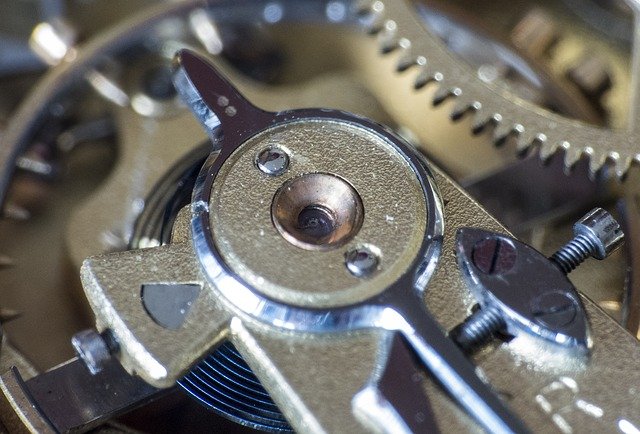So your beloved watch needs a little TLC. In this article, we’ll discuss some of the basics of oiling and cleaning your watch and some of the tools you’ll need if you want to succeed in this endeavor.
Reasons to oil
Reasons abound for why a watch needs lubrication. Among the most common ones is that the service date has come up. Like a car, every now and then a watch needs an oil change, tires rotated and a tune-up. Watches are no different. Every three or so years, it should be completely disassembled with each part being cleaned, dried and oiled.

If you just got the watch, say from a friend or grandparent, that’s also a good time to get it serviced. Old oil will dry out and gum up the workings, thus making it inaccurate. It’s best to start fresh with your new gift. Nothing will enhance a watch’s life and accuracy like a proper overhaul.
Cleaning
The inner workings of a watch must be cleaned, repeat: MUST BE CLEANED, before oiling. If you lubricate any pieces while there is any form of gunk, whether it be dust, dirt, or anything else, it will cause more harm than good. For example, the dust and lubricant could turn into more of a paste than an oil, and that would really slow down anything within. After it’s been cleaned, let it dry.
Tools
There are several types of tools needed. These include:
- Simple Oiler (or Dip Oiler)
This is the simplest and most common type of oiler. If you’re just starting out, go with this one. They’re cheap, so if it breaks you can easily replace them; and, as the name implies, they’re simple: you can see the amount of oil that is on the tip. They also come color coded for easy identification of the size. While they may be simple, don’t think that means they’re not as good as other options. A professional can still work wonders with these. Kind of like a camera, fancy equipment doesn’t make a good photographer.
- Precision Tip Oiler
These are more expensive than the simple ones, but many prefer them. They are designed to grab a specific and accurate amount of oil with their tip each and every time. Like their counterparts, they also have different sizes for different jobs. You must know, though, that having these fancy tools does not make you a better watch worker. Like we said earlier, nicer equipment doesn’t make you a better artist.
- Automatic Oiler
Much more expensive than the others, but often faster and more accurate, an automatic oiler is good at getting the exact amount of lubricant you need with just the push of a button. Some professionals recommend that you set the amount of oil that comes out to be what’s needed most often; for example, if you see the same watch that needs the same spot oiled several times a day, this can be handy, as it is already set to dispense that much oil. Some professionals have several automatics set to address the most pressing needs. The main purpose of automatic oilers is to increase efficiency with common parts.
- Oil Cups
Many veterans recommend an oil cup. Dipping the oiler straight into the oil jar can contaminate it with dust or debris, thus ruining all of it. When using the cup, close it immediately after each use. Even if that means you’re opening and closing every minute. It’s also wise to dip the tip in the side of the cup, since any contaminants work their way to the middle. You don’t want to pick those up and put them in the watch.
Oils
There are so many different types of oil that it will be hard to go over all of them, and each one has different uses for different parts of the watch, different torques, different speeds, etc. We will simplify here by just go over oiling basics.
- Do not over or under oil. Putting too much oil can cause it to run over and get into spaces where it doesn’t belong. If you don’t use enough oil, though, you’ll have a problem of a different sort. If you have the technical documents, they will often tell you what kind to use, where to put it and how much. If not, when oiling a jewel on a gear train, you don’t want to cover it, you want to be just under the tip.
- Do not skimp on oils. Make sure what you’re using doesn’t expire anytime soon. You may be trying to save money, but in the long run it could cause more problems. Synthetic oils don’t gum up, they just evaporate. If you’re using an expired bottle, the oil could be gone much sooner than you anticipate.
Hopefully, these beginner tips are helpful to you. If you’re experienced with watches, you may be able to execute maintenance on your own. Just make sure you know what you’re doing, though, otherwise a rookie mistake could end up ruining your watch.
If you need a professional touch, we have been in business since 1983 and can do anything from Bulova repair to Grand Seiko battery replacement. Simply put, if something is wrong with your watch, we’ve likely seen it before and know the most efficient way to get it operational again.




